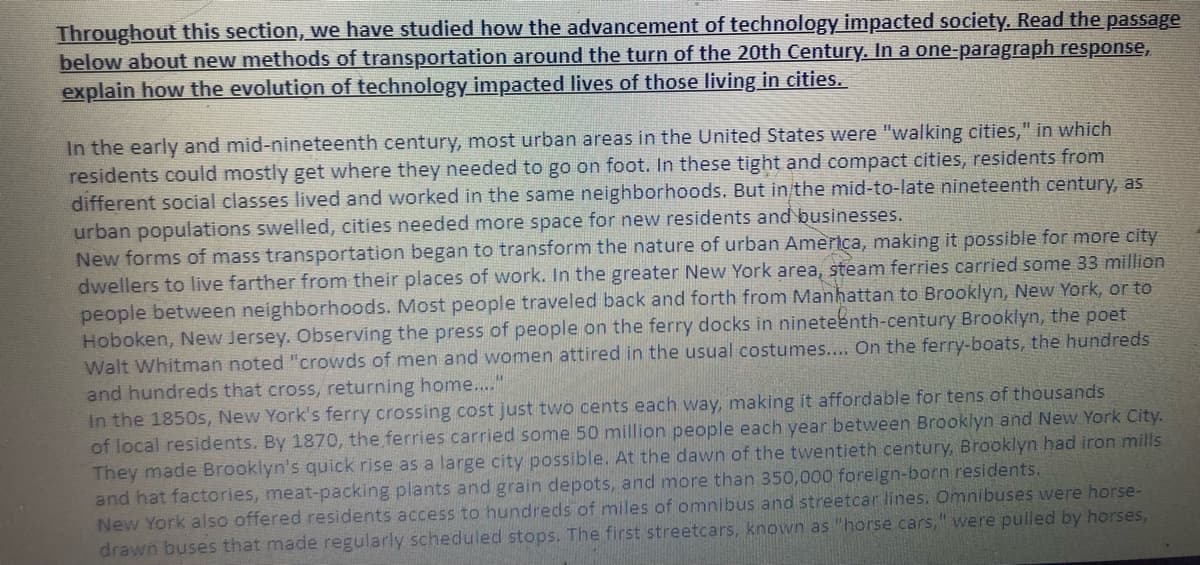Explain how the evolution of technology impacted lives of those living in cities.
Explain how the evolution of technology impacted lives of those living in cities.
Related questions
Question
100%
Explain how the evolution of technology impacted lives of those living in cities.

Transcribed Image Text:Throughout this section, we have studied how the advancement of technology impacted society. Read the passage
below about new methods of transportation around the turn of the 20th Century. In a one-paragraph response,
explain how the evolution of technology impacted lives of those living in cities.
In the early and mid-nineteenth century, most urban areas in the United States were "walking cities," in which
residents could mostly get where they needed to go on foot. In these tight and compact cities, residents from
different social classes lived and worked in the same neighborhoods. But in/the mid-to-late nineteenth century, as
urban populations swelled, cities needed more space for new residents and businesses.
New forms of mass transportation began to transform the nature of urban America, making it possible for more city
dwellers to live farther from their places of work. In the greater New York area, steam ferries carried some 33 million
people between neighborhoods. Most people traveled back and forth from Manhattan to Brooklyn, New York, or to
Hoboken, New Jersey. Observing the press of people on the ferry docks in nineteenth-century Brooklyn, the poet
Walt Whitman noted "crowds of men and women attired in the usual costumes.... On the ferry-boats, the hundreds
and hundreds that cross, returning home...."
In the 1850s, New York's ferry crossing cost just two cents each way, making it affordable for tens of thousands
of local residents. By 1870, the ferries carried some 50 million people each year between Brooklyn and New York City.
They made Brooklyn's quick rise as a large city possible. At the dawn of the twentieth century, Brooklyn had iron mills
and hat factories, meat-packing plants and grain depots, and more than 350,000 foreign-born residents.
New York also offered residents access to hundreds of miles of omnibus and streetcar lines. Omnibuses were horse-
drawn buses that made regularly scheduled stops. The first streetcars, known as "horse cars," were pulled by horses,
Expert Solution
This question has been solved!
Explore an expertly crafted, step-by-step solution for a thorough understanding of key concepts.
Step by step
Solved in 2 steps
